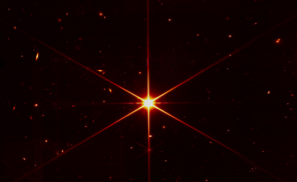After the Webb telescope's critical mirror alignment steps were completed, the Webb team perfectly aligns and focused the telescope on the star 2MASS J17554042+6551277, which the James Webb Space Telescope team sincerely expects, that Webb's optical performance will achieve science goals. will meet, or perform more than expected.
With Webb's Optical Telescope Element operational, the Webb team performed a critical alignment phase, with every optical parameter that was tested and tested, and it is performing well above expectations. We found no significant problems with Webb's optical path, and no measurable contamination or obstruction, the Webb team says, adding that the Webb telescope is now able to successfully collect light from distant objects, and deliver them to its instruments. is enabled.
We know that we have built the right telescope, says Ritva Kesky-Kuha, Webb's deputy optical telescope element manager at NASA Goddard.
The Webb team will proceed through the remaining escape alignment steps, with the Webb team preparing the final science instrumentation, the Webb team will incorporate the Near-Infrared Spectrograph, the Mid-Infrared Instrument, and the Near Infrared Imager and Slitless Spectrograph to further align the telescope, and Also an algorithmic tool will be evaluated at this stage of the process. The team's objective is to achieve a well-aligned telescope in all science instruments, and calculate the final improvements needed. As the final alignment phase of the web begins, the team will adjust for minor and residual position errors in the mirror segments.
By early May, the Webb team is on track to finish all aspects of the Optical Telescope Element alignment, with the Webb team releasing the telescope's first full-resolution imagery and science data over the summer.
Webb is the world's largest space telescope, the purpose of which is to know the secrets of the universe, Webb is a space science observatory, once it is fully operational, it remains in the solar system, to solve the mysteries of the universe. will help researchers.



Comments